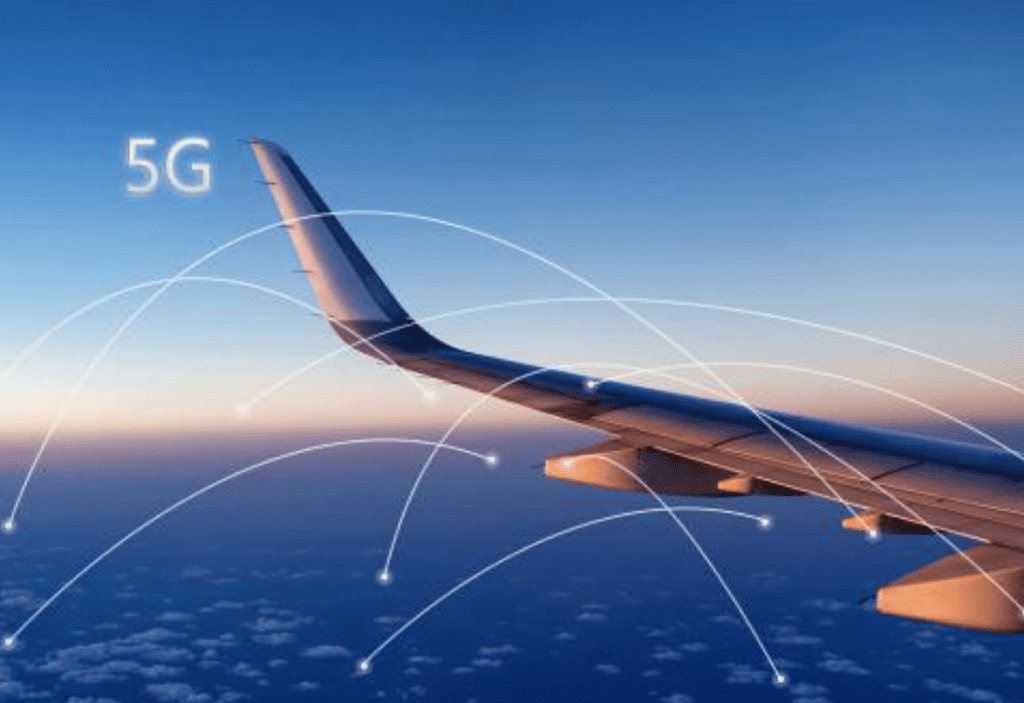Airlines in the EU Will Soon Provide 5G Connectivity to Passengers


In late November, the European Commission ruled that airlines will be able to provide 5G connectivity on planes. (Photo: European Commission)
In late November, the European Commission ruled that airlines will be able to provide 5G connectivity on planes. The Commission’s ruling has reserved specific frequencies to enable in-flight mobile communications since 2008. The new implementing decision makes widespread 5G deployment possible.
Cell carriers in the U.S. are still limiting the use of 5G around airports because of concerns about interference with aircraft equipment. In particular, the Federal Aviation Administration and some U.S. airlines are worried about 5G interfering with radio altimeters—critical equipment for landing a plane in low visibility conditions.
“Altimeters operate at frequencies of around 4.2 to 4.4 GHz, and certain altimeters without modern filtering technology can pick up interference from devices operating in nearby frequencies,” explained James Bikales, writing for the Washington Post. These frequencies are near those used by 5G networks in the U.S.—3.7 and 3.98 GHz. In comparison, 5G in Europe operates at frequencies of 5 GHz and higher. This provides more “gap spacing” and reduces concerns about interference.
There have been more than 100 incidents reported that involve potential 5G interference since January 2022. The FAA released a statement in June requiring regional aircraft operators to install radio frequency filters if their plane is among the most susceptible to this kind of interference.
A group of aviation stakeholders that includes the National Business Aviation Association (NBAA) is encouraging the FAA as well as the Department of Transportation and Department of Commerce to address this issue proactively. The aim is to avoid preventable flight delays and cancellations while introducing a solution that allows 5G to grow.
Some airlines in the U.S. have installed radio altimeter replacements for their in-service Airbus A320 model aircraft. They are installing an upgraded version of the legacy ERT 530 radio altimeter designed by avionics manufacturer Thales. As of mid-September, 50 of these aircraft had already been retrofitted with the ERT 530R.
There are still concerns about offering 5G connectivity in-flight for European airlines. If hundreds of passengers are trying to connect to 5G antennas at the same time, the output power could be high enough to raise concerns for electronic aircraft equipment.
In his article for the Washington Post, Bikales shared comments from Tom Wheeler, former chairman of the Federal Communications Commission, who believes that concerns about altimeter interference may be overblown. “The reality is that the vast, vast majority of aircraft have altimeters that are shielded from the signals,” Wheeler stated. Additionally, older aircraft models are either being replaced or shielded.
The technical concerns that led to a ban on cell phone use in-flight may be addressed by the latest advancements in picocell technology. Picocells connect to satellite networks or ground-based networks and then emit a low power signal throughout an aircraft.
The post Airlines in the EU Will Soon Provide 5G Connectivity to Passengers appeared first on Avionics International.
—————
Boost Internet Speed–
Free Business Hosting–
Free Email Account–
Dropcatch–
Free Secure Email–
Secure Email–
Cheap VOIP Calls–
Free Hosting–
Boost Inflight Wifi–
Premium Domains–
Free Domains





